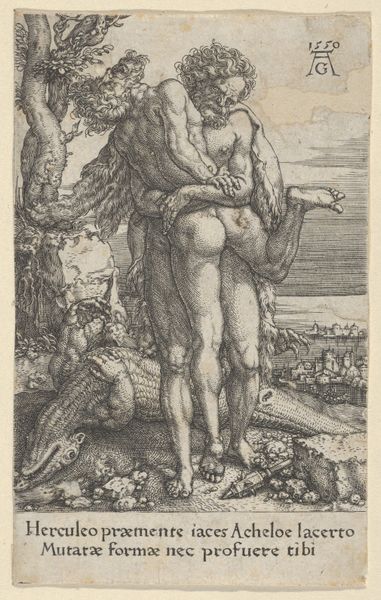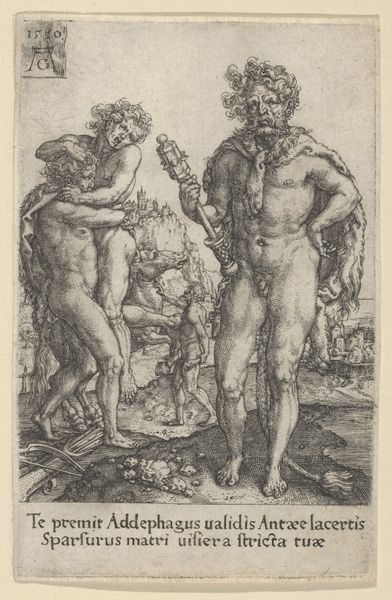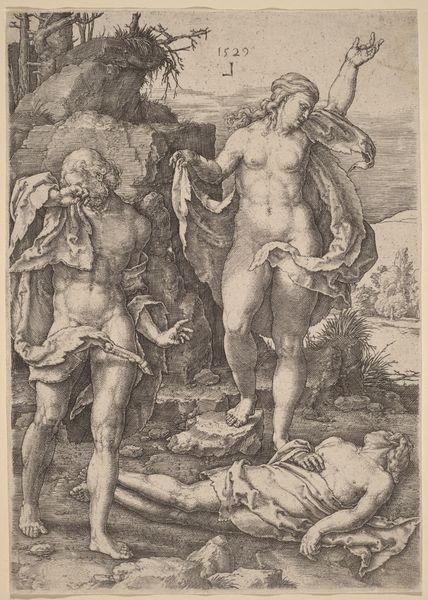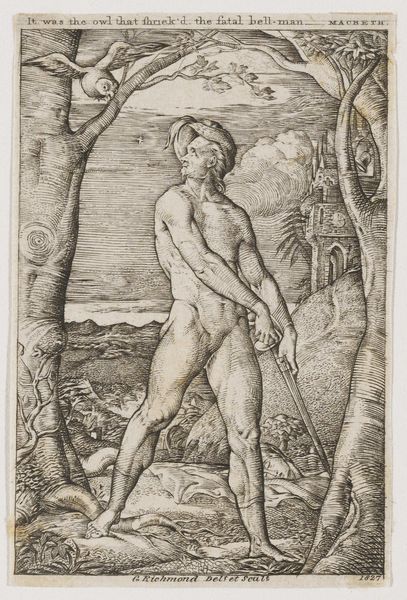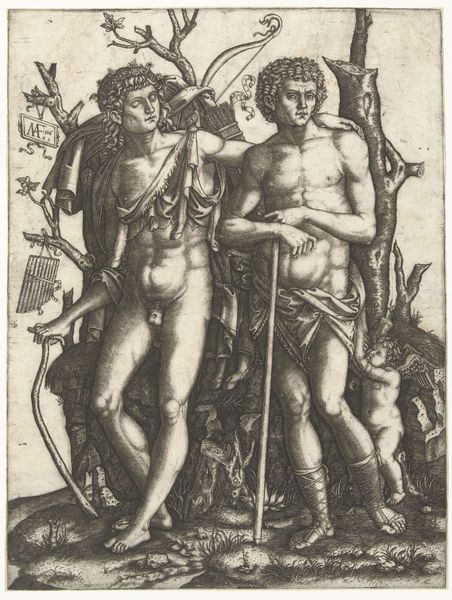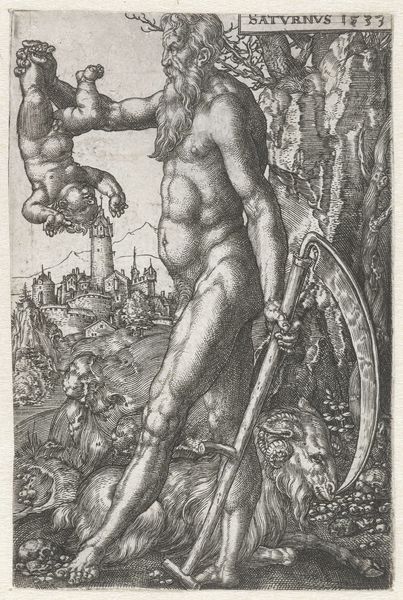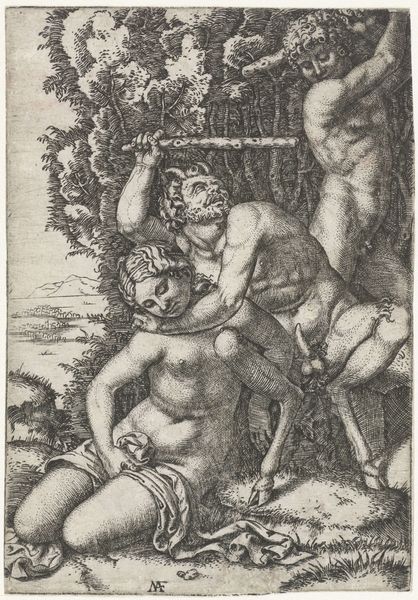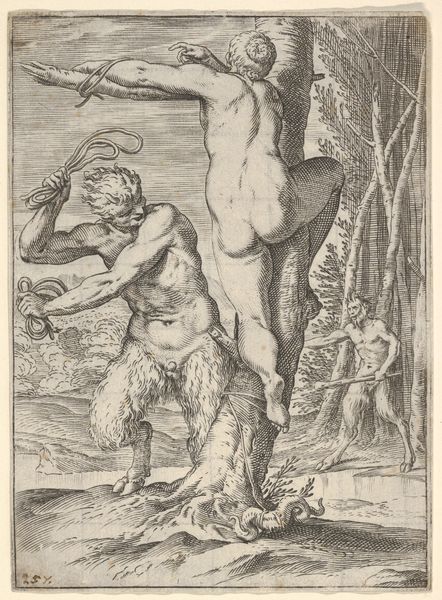
Hercules Killing Nessus, from The Labors of Hercules 1550
0:00
0:00
drawing, print, engraving
#
portrait
#
drawing
#
pen drawing
# print
#
figuration
#
11_renaissance
#
line
#
history-painting
#
northern-renaissance
#
engraving
#
male-nude
Dimensions: Sheet: 4 1/4 x 2 3/4 in. (10.8 x 7 cm)
Copyright: Public Domain
Curator: The tension in this 1550 engraving is palpable. Titled "Hercules Killing Nessus, from The Labors of Hercules," it comes to us from the hand of Heinrich Aldegrever. It's currently part of the collection at the Metropolitan Museum of Art. Editor: It’s the rendering of Hercules that immediately strikes me – the clear symbolism with his attribute. He's imposing, a classic figure of idealized strength, though rendered with a cool detachment, as if enacting a duty rather than a passionate act. Curator: Indeed. This image really exemplifies how artists of the Northern Renaissance were reinterpreting classical myths and imbuing them with contemporary socio-political meaning. Hercules wasn't just a hero; he was a symbol of virtuous leadership and justified power. Editor: And look at the figure of Nessus! The centaur isn't presented as purely monstrous. There's a kind of pathetic quality in his form and posture that elicits…sympathy. Curator: Perhaps. However, it's crucial to remember the broader context. The presence of Deianira—Hercules’s wife—the object of the struggle between the two figures—was designed to highlight a very traditional social structure. This wasn’t a simple tale of monstrous desire and heroic retribution but one laden with concerns about proper order, adultery, and consequence. The imagery is very much serving to enforce patriarchal structures of power in the culture. Editor: Agreed, that it enforces power dynamics. Yet, Aldegrever allows a sliver of nuance; he suggests, through the contrast in Hercules' stoicism versus the Centaur's anguish, that the exertion of power, even when justified, is always costly, even alienating, to the actor. It's a subtle undercurrent beneath the triumphant scene. The artist almost humanizes him through suffering even in monstrosity. Curator: That interpretation reflects our modern lens of individual empathy. While I see how the detail and engraving skill might allow for this nuanced feeling today, consider its place within a print series: an affordable item of mass visual culture intended to broadcast a firm position on civic and marital roles. I see those things in contrast to your reading. Editor: Perhaps, or perhaps Aldegrever was ahead of his time in the range of emotions depicted and included in a singular work of art. Regardless, this image's continued engagement with audiences proves his choices created enduring themes. Curator: Indeed. Seeing the way the artist uses symbols, social and political views really bring depth to this engraving.
Comments
No comments
Be the first to comment and join the conversation on the ultimate creative platform.
